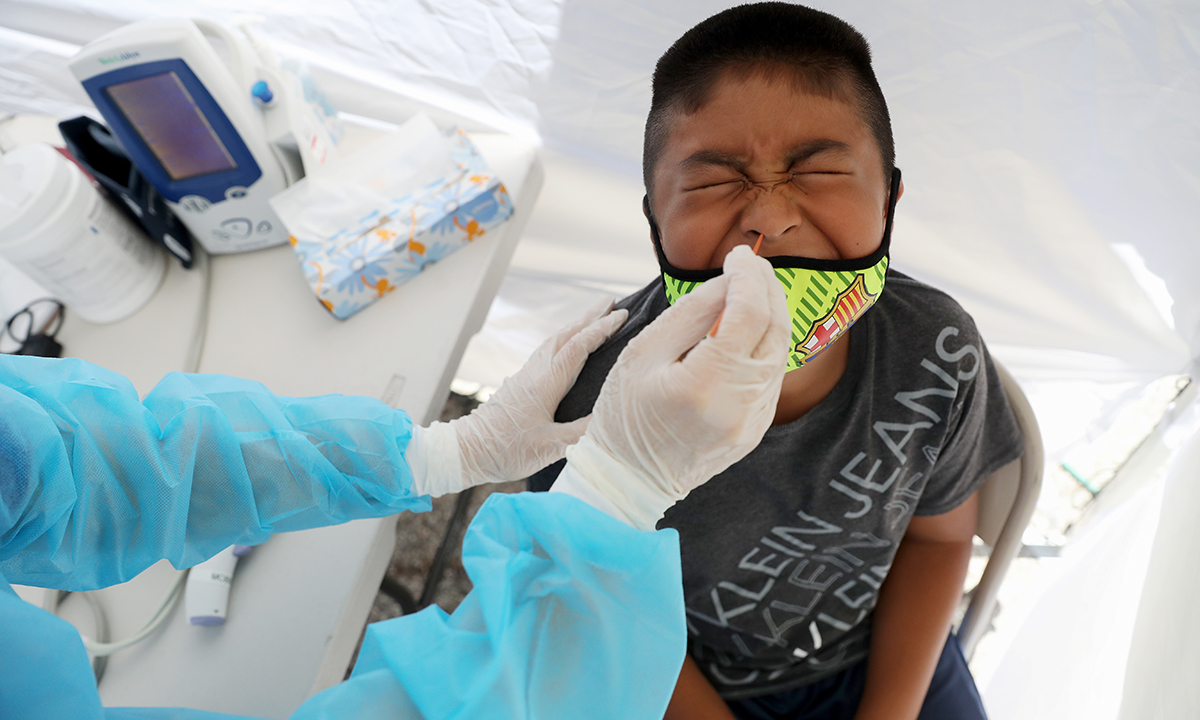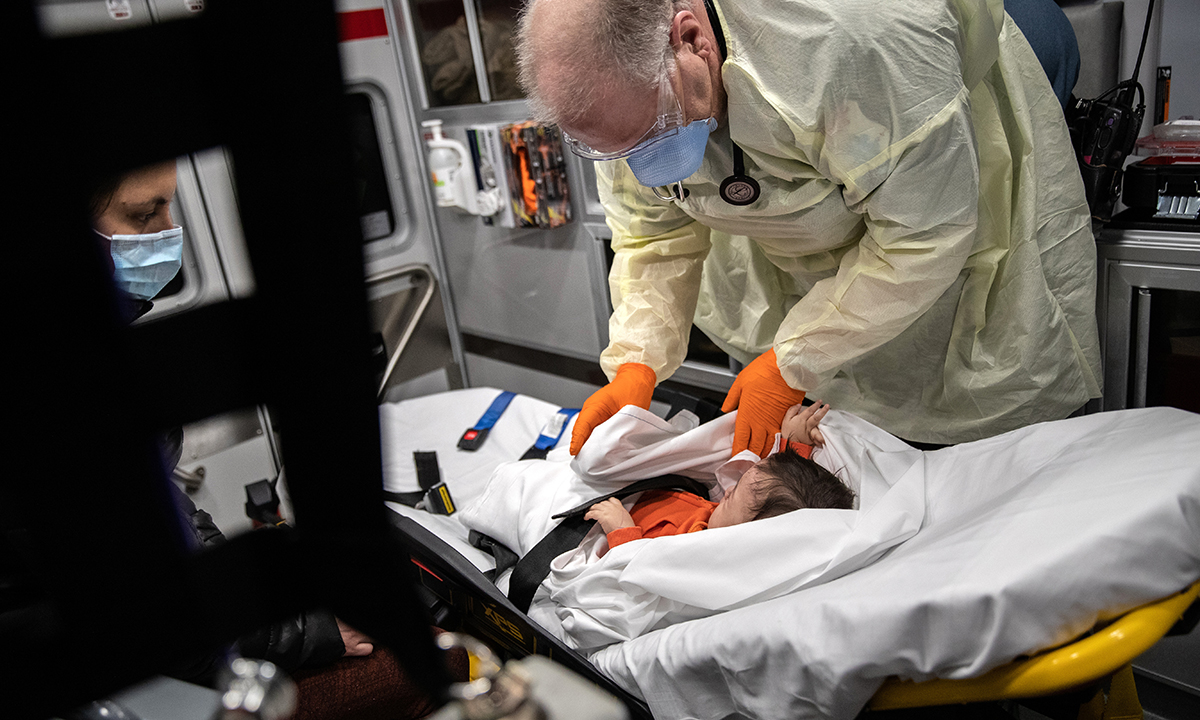We’re About to Find Out If the Pandemic is Really Over. Are Schools Ready?
Williams: No one wants to think about the pandemic as a pressing health crisis anymore, but that thinking comes with a cost

Get stories like this delivered straight to your inbox. Sign up for The 74 Newsletter
I’m writing today’s column underwater. In a windowless submarine. Full to the brim with quicksand and malaise.
On the one hand, I’m just living another round of the fall parenting ritual—the seasonal cold that one of my three kids brought home.
But on the other hand, that viral downbeat sure hits differently when—like me—you’re one of the roughly 30% of adult Americans whose COVID infection turned into some sort of long COVID. After six months of COVID-induced asthma, which was actually lung scarring, which — shucks — is perhaps a pulmonary embolism, which turned out to possibly be heart damage, but instead might be microclotting or the curse of the pharaohs or goodness knows what. We’re all just guessing now.
Anyway boyo, lemme tell you, it doesn’t feel like a standard-issue head cold.
I suppose, as I lay here, flattened by these twin maladies, at least I can take some succor from the fact that the pandemic is definitely “over.” Or, erm, that’s how it seems, anyway. Most of you out there — most of us, I suppose — are done with avoiding the virus. Masks are optional — and scarce — pretty much everywhere now, what few vaccine mandates we had are evaporating in the face of widespread apathy, and the “your kid was exposed to COVID in school notifications” are down to just one every few weeks. Hang on, gotta reset that particular counter, my phone just rang with a new one.
Sigh.
This coming winter will likely fall somewhere between those two hands—pre-2020 normalcy and the past 2.5 years of crisis. On the normalcy side of the ledger: schools are open everywhere, and essentially all COVID mitigation measures have been driven from campuses. Insofar as we’re talking about the pandemic and schools, we’re relitigating school closure fights from 2020. Barely 1 in 10 Americans have gotten the latest COVID booster vaccine. Why bother? The virus is last year’s story, and avoiding it feels inconvenient.
And yet, weekly COVID cases have been above a quarter million since April, with a summer wave cresting at nearly one million new weekly cases. Note, of course, that waning public attentiveness to the pandemic has meant that we’re only administering around 15% as many weekly COVID tests as we ran at our mid-January 2022 peak. In other words, the actual case counts are assuredly much higher.
Meanwhile, long COVID appears more prevalent and serious than we’d like to imagine. Hospitals are being overwhelmed by an unprecedented number of pediatric respiratory infections. Early returns from colder areas of Europe suggest that the U.S. is poised for yet another frustrating, deadly COVID winter.
Many in education have avoided thinking about the potential need for reinvigorated mitigations — widespread masking, serious quarantining rules and so forth — by narrowing the field of COVID consequences. As I wrote in October 2021, when we were about six weeks into our family’s first COVID case, “When humans interpret the world, when we try to make sense of the situations before us, we’re always in danger of misunderstanding them in self-serving ways. … The key to reasoning this way — interpreting the facts so that they almost always confirm what you’d rather do anyhow — is carefully framing the terms of debate up front.”

And so now, as we muddle into another fall with lower-than-hoped vaccine and booster uptake and already overwhelmed pediatric hospital wards, too many in education focus on narrow truths like these: 1) Most kids don’t appear to get particularly ill from the virus; and 2) Virtual school will never be as effective as in-person instruction. Those are facts, and they flatter these folks’ prior convictions about what must be done next — schools must remain open, making scant-to-zero effort to reduce infections. Schools, scarred after years of trying to keep kids and staff safe in the face of sustained pressure to reopen, shorten COVID quarantine rules, and unmask their campuses, are largely unwilling to risk restoring any protections against spreading infection.
And yes, if only those were the only facts, the pandemic truly would be over, schools’ winter 2022 path to a consequence-free embrace of a spike in pediatric respiratory infections would be crystal clear. But, naturally, the world of schools, families, children and their broader communities is vastly more complex than that deductive two-step.
Note, for instance, that we’ve done a generally poor job of protecting children from COVID infection—by early 2021, more than 75% of children had been infected, by far the highest rate of any age group. By the end of the summer, nearly 90% of kids had been infected at least once. The long-term consequences of pediatric infection remain mostly unknown, but many kids, including one of mine, aren’t lucky enough to prance through COVID infection with minor, short-term cold symptoms.
What’s more, though public discourse persistently minimizes this, it is stupefyingly obvious that there are other contexts and consequences to pretending our way back to pre-pandemic norms around masks, social life, quarantining and basic pandemic mitigation measures. The pandemic’s impact can’t be measured solely in terms of pediatric infection rates and academic achievement scores. This fall’s spike in child illnesses is keeping record numbers of parents out of work (Oh hey! Hi! It’s me again, dropping in a few days later to edit. I’m still writing from my submarine…which I’m currently piloting to the local urgent care clinic because my very sick preschooler can’t get a normal pediatrician appointment because they’re slammed by the spike in illnesses. Fingers crossed we don’t need to putter over to the hospital—because it’s already full of sick kids).
Or, more grimly, as Keeanga-Yamahtta Taylor put it in a New Yorker article last month, “By the end of February, 2022, more than two hundred thousand children under the age of eighteen—more than one out of every three hundred and sixty—had lost a caregiver to [COVID]. Black and Latino kids lost their caregivers at nearly twice the rate of white children.”
I know that no one wants to think about the pandemic as a pressing health crisis anymore. Please believe that I don’t want to write this column yet again. I know that we’ve aligned our default COVID approach with our approach to mass shootings: we do nothing to stop the problem and express impotent frustration when it persists.
But I submit to you that that sort of magical thinking will work no better now than it has throughout the pandemic. We convince ourselves that the pandemic’s health risks are nothing compared to the impacts on student learning or working caregivers’ careers. Then, naturally, we learn that refusing to mitigate against health risks actually produces ample damage to learning and careers anyway. Indeed, COVID stole a Latino father from his two children in my family’s school community several weeks ago.
But at least masks are now optional in D.C. schools. At least COVID quarantining has become largely voluntary and on the honor system. At least we can console ourselves with the appearance of normalcy — even if propping up that mirage turns out to be unnecessarily deadly for many in our communities.
It’s simple: if we yet again refuse to face the public health facts this winter and adopt basic mitigations like mask mandates, social distancing, an aggressive push to increase booster rates and similar … COVID will take the lives of more parents and caregivers, disproportionately low-income and/or disproportionately people of color, in communities around the country. That’s a high price to pay to allow the remainder of us to pretend ourselves into a false dawn of pre-pandemic normalcy.
Get stories like these delivered straight to your inbox. Sign up for The 74 Newsletter

;)
